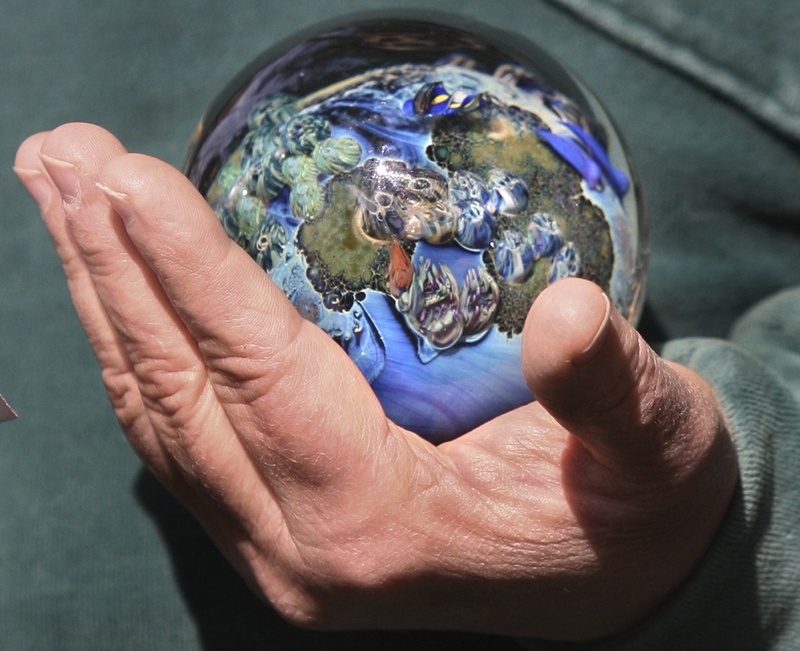I was a doctoral candidate at the University of Massachusetts in 1969 when I began to take environmental issues seriously.
I and a small cadre of other like-minded students teamed up with the local chapter of the Sierra Club in Amherst to organize “teach-ins” on air and water pollution.
We weren’t alone.
People from all walks of life were waking up to the fact that air and water pollution were significant problems demanding our attention.
The first Earth Day in the spring of 1970 was full of excitement and hope, with public demonstrations occurring across the country.
It was no coincidence that these events coincided with the creation of the Environmental Protection Agency and, shortly thereafter, the Clean Air and Water acts.
We had our own hero in Maine Sen. Edmund Muskie. It was a time when young idealists actually did influence events in Washington.
During the 1970s and 1980s, we experienced genuine reductions in air and water pollution.
Rivers became noticeably cleaner, and the obvious signs of poor air quality — odor and particulate matter — were addressed by scrubbers installed on smokestacks and catalytic converters on automobile exhaust systems.
We could see where we were going when we drove through the Los Angeles Basin, and we didn’t experience tearing eyes as my wife had when she was a child and lived in Southern California.
But the 1980s had a surprise in store for us: invisible, odorless gases were building up in our atmosphere, and they would change the way we view the Earth. They became known as greenhouse gases because they remind us of the way a glass roof in a greenhouse traps the heat inside.
Carbon dioxide is one, water vapor another, methane a third.
Carbon dioxide is not the most potent, but it is the most abundant, so its overall impact gives it a unique status.
Unfortunately, few people at the time gave credence to the notion that the concentration of greenhouse gases in the atmosphere was related to the warming trend experienced during the waning years of the 20th century, a warming trend we now label as global warming.
By 2000, the average carbon dioxide concentration had reached 370 parts per million (a 33 percent increase from the early 1800s), and the average global temperature had risen more than a degree.
A degree or so may not seem like much, but given the Earth’s unequal heating and the global circulation pattern of water and wind, global warming affects the Earth differentially.
The average annual temperature in the Northeast grew by a degree and a half just in the period between 1970 and 2000. The average winter temperature in Maine during that same time climbed by approximately four degrees Fahrenheit!
Even more alarming, the most recent decade, 2000-2010, has been the warmest on record.
Not surprisingly, the concentration of CO2 in the atmosphere has continued its upward march, reaching 393.6 ppm in February of this year.
Global warming is an undisputed fact, and the idea that human activities are responsible for it is now accepted by the overwhelming majority of the world’s scientists.
Nevertheless, the human species seems paralyzed in the face of this threat.
The concentration of carbon dioxide in our atmosphere continues to rise, now at the rate of about 2 ppm per year, and the average global temperature continues upward at about half a degree per decade.
And year after year, consistent with scientific predictions for climate change, we experience record-breaking floods, droughts, tornadoes, forest fires, melting glaciers, rising sea levels and a multitude of other distressing signs of the drama unfolding about us.
So what is it we are to make of Earth Day in 2012?
I may be old-fashioned, but I still believe there is merit in committing ourselves to setting an example for responsible energy use in our own lives.
A simple change to compact fluorescent light bulbs, a car that gets better gas mileage, a lower thermostat, a few solar panels, an Energy Star appliance, better home insulation — such steps, when multiplied by millions of people, can have a huge impact on our nation’s carbon footprint.
But that is not enough.
In 1970 we had a government that could take bipartisan action on behalf of our environment.
That is not the case today.
So we must exert much greater pressure on our elected officials to confront global warming head-on, and not simply adapt to the otherwise inevitable outcomes of climate change.
It is not jobs versus the environment. What job will be worth having if we don’t have a planet to sustain us?
It is way past time to just clean up roadside litter on April 22, and then return to business as usual.
Joseph Hardy is a retired educator and mediator. He lives in Wells.
Send questions/comments to the editors.



Success. Please wait for the page to reload. If the page does not reload within 5 seconds, please refresh the page.
Enter your email and password to access comments.
Hi, to comment on stories you must . This profile is in addition to your subscription and website login.
Already have a commenting profile? .
Invalid username/password.
Please check your email to confirm and complete your registration.
Only subscribers are eligible to post comments. Please subscribe or login first for digital access. Here’s why.
Use the form below to reset your password. When you've submitted your account email, we will send an email with a reset code.